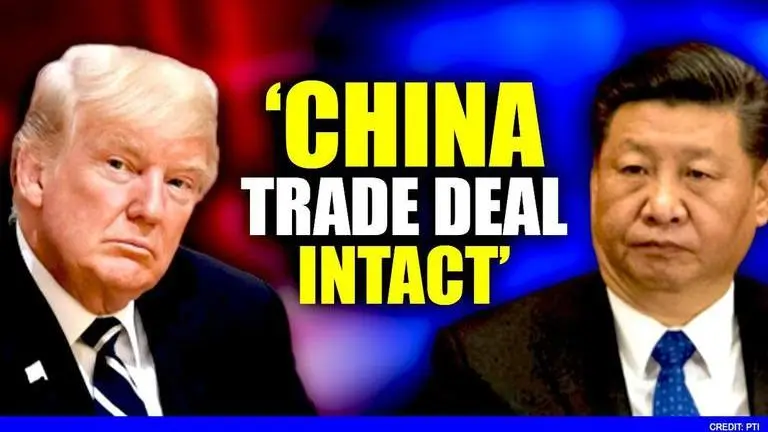Updated 23 June 2020 at 08:41 IST
Trump clarifies on US-China trade deal after White House trade advisor says 'it's over'
On Tuesday, US President Donald Trump took to Twitter and clarified that the trade deal with China is 'fully intact'. Trump hopes China will 'live up to terms'
- World News
- 3 min read

On Tuesday, US President Donald Trump took to Twitter and clarified that the trade deal with China is 'fully intact'. Trump said that he hopes China will continue to 'live up to terms' of the agreement. His tweet comes right after reports came in that White House trade adviser Peter Navarro in an interview to Fox news has said that the trade deal with China is “over."
The US has been speaking openly against China for its mismanagement of Coronavirus outbreak and has slammed Beijing for its Hong Kong security law, action against the minorities in Xinjiang and its 'unilateral' action on the border with India.
The China Trade Deal is fully intact. Hopefully they will continue to live up to the terms of the Agreement!
— Donald J. Trump (@realDonaldTrump) June 23, 2020
In fact, amid rising tensions between the Asian neighbours - India and China, US president has gone on to offer mediation between the two on the recent LAC standoff. "It's a very tough situation. We are talking to India, we're talking to China. They have got a big problem there. They have come to blows and we'll see what happens. We are trying to help them out," Trump had told media.
Advertisement
However, the US Secretary of state has heavily criticised China on the Galwan clashes. On June 20, referring to the Galwan clashes, he had said, "The PLA has escalated border tensions – we see it today in India, the world’s most popular – populous democracy. And we watch as it militarizes the South China Sea and illegally claims more territory there, threatening vital sea lanes, a promise they broke again".
Another bone of contention that has arisen between US and China is the “Uyghur Human Rights Policy Act of 2020” signed by Trump last week. It seeks to punish China on the human rights violations of the ethnic minority groups in the Xinjiang region. It is aimed at holding accountable perpetrators of human rights violations and abuses such as the systematic use of indoctrination camps, forced labour, and intrusive surveillance to eradicate the ethnic identity and religious beliefs of Uighurs and other minorities in China.
Advertisement
Trade war & preliminary deal
In January this year, the US and China had signed a deal to end their months-long trade war. According to the deal, China pledged to boost US imports by $200billion above 2017 levels and strengthen intellectual property rules. In exchange, the US agreed to halve some of the new tariffs it had imposed on Chinese products. While Washington termed it as 'transformative' for the US economy, Beijing had hoped for a 'win-win' situation.
US- China trade war
The trade war began between the two economies when in 2018 the Trump administration imposed tariffs on more than $360bn (£268bn) of Chinese goods, accusing it of 'unfair trade practices.' China retaliated with tariffs on more than $110bn of US products. Washington delivered four rounds of tariffs from 2018-2019. The most recent was a 15% duty on Chinese imports, from meat to musical instruments. Beijing hit back with tariffs ranging from 5% to 25% on US goods.
Published By : Navashree Nandini
Published On: 23 June 2020 at 08:41 IST
